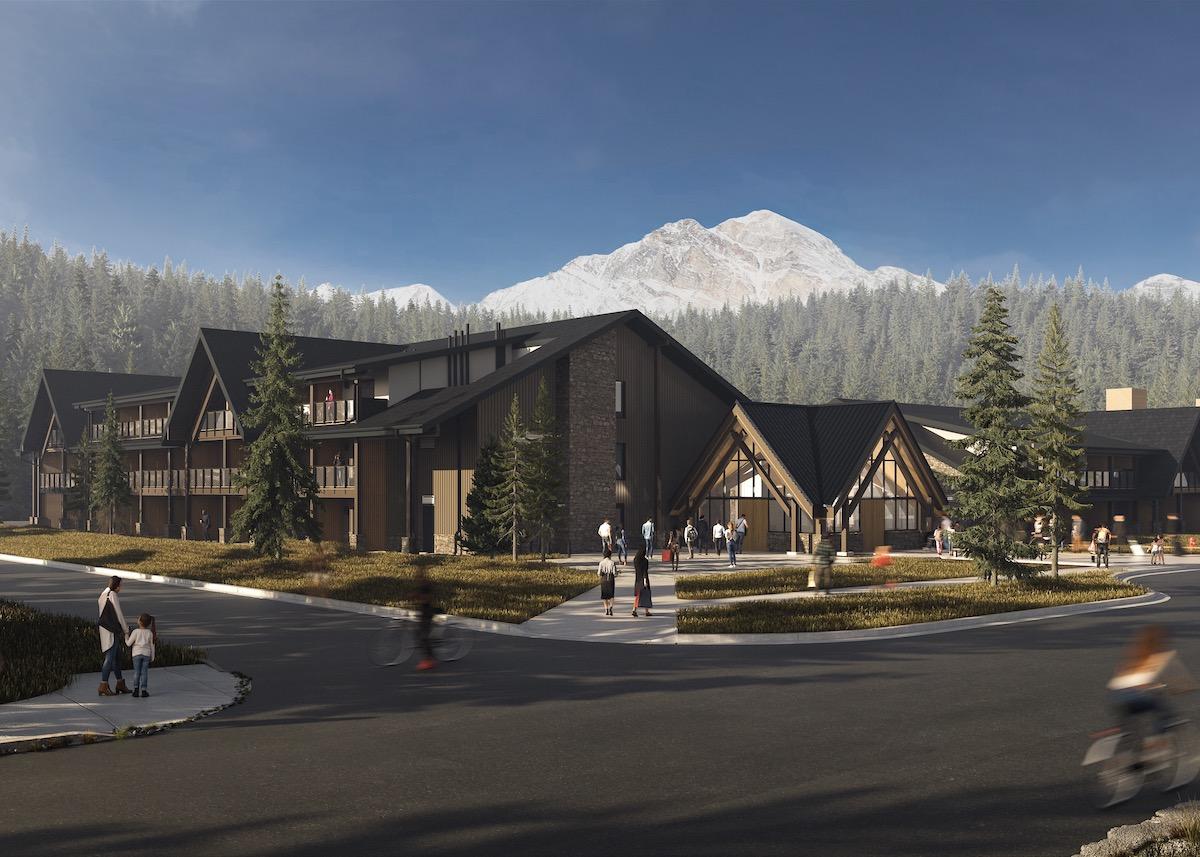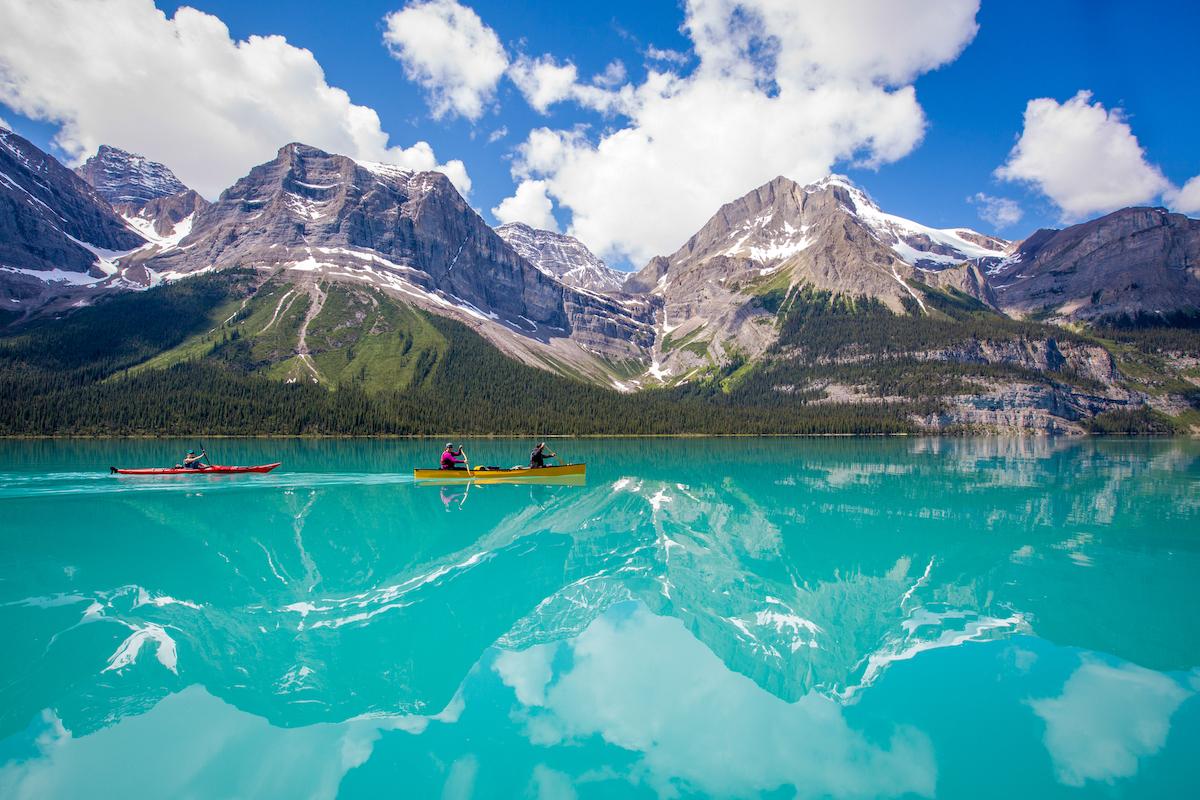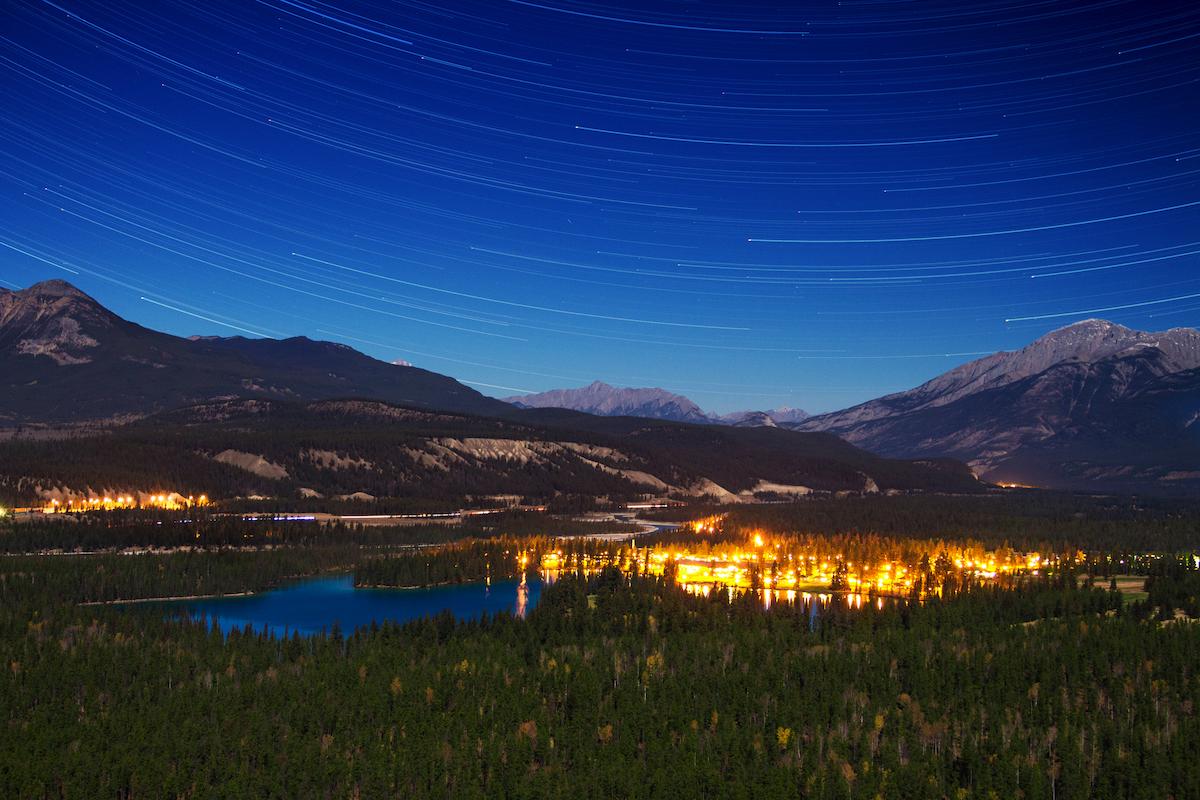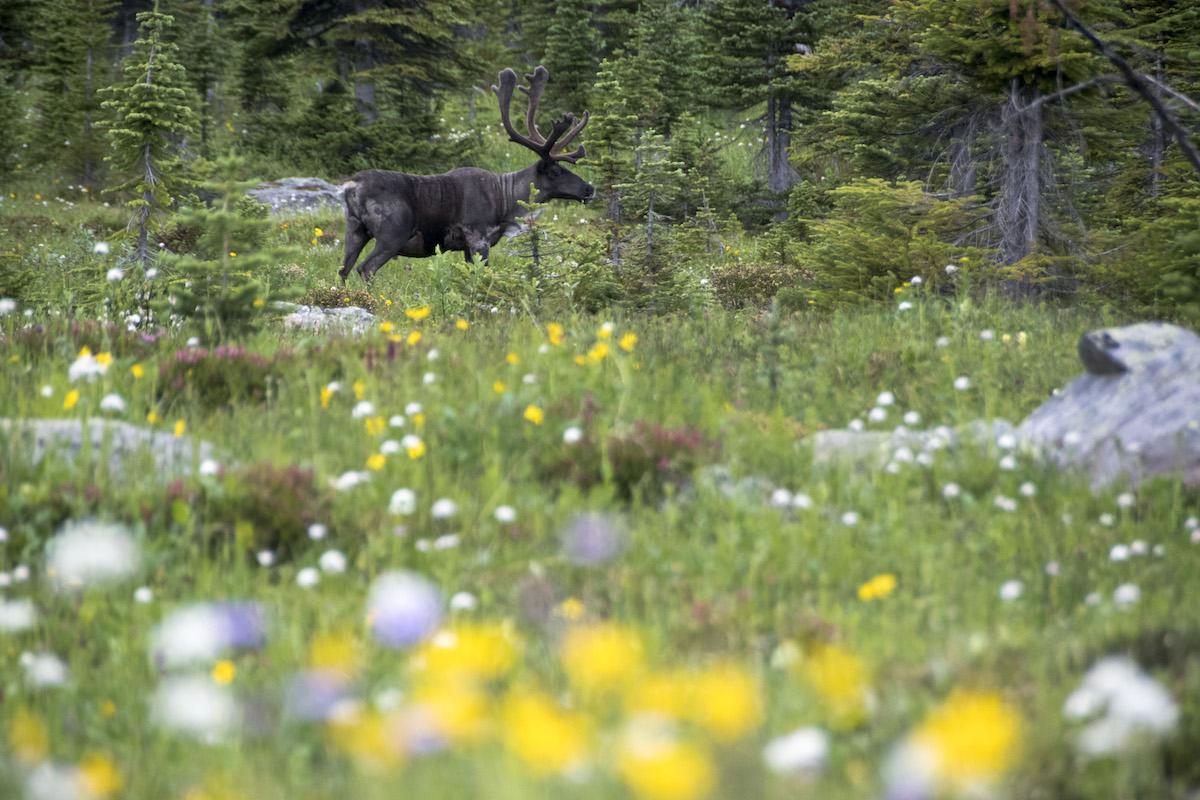
When the Forest Park Hotel opens in June, it will be the first new hotel in Jasper since 1983/Parks Canada
Jasper National Park is poised to open a new, permanent Indigenous art installation on the lawn next to the information centre.
There will be pathways, sculptures, benches and art on the sizeable lawn, says Jennifer Dubois, visitor experience-product development specialist. “It’s an interpretive exhibit so panels about Indigenous groups let them tell their own stories about their connection to Jasper.”
The installation, which doesn’t yet have a name, should open in June.
Also on tap for June is the opening of the Forest Park Hotel, the first new hotel in the mountain town since 1983. The wilderness-inspired hotel will be connected to the former Sawridge Inn & Conference Centre to create one resort-style getaway that “will provide guests with a relaxing escape when visiting such a beloved Canadian national park,” says Stu Black, chief operating office of the Banff Jasper Collection by Pursuit.
Within Jasper, Pursuit’s portfolio of hotels and experiences includes the Columbia Icefield Adventure, Columbia Icefield Skywalk, Glacier View Lodge at the Columbia Icefield, dining and boat tour adventures at Maligne Lake, and the Maligne Canyon Wilderness Kitchen.

Boating on Maligne Lake in Jasper National Park/Parks Canada, Ryan Bray
Japser is one of Canada’s busiest national parks. In 2021, it drew just over two-million visitors — almost as many as before the pandemic. Dubois says Jasper is one of just five Canadian national parks that boasts a townsite. The others are Banff National Park, Waterton Lakes National Park, Yoho National Park, Riding Mountain National Park and Prince Albert National Park. Jasper’s population is around 4,200.
Jasper is also the largest national park in the Canadian Rockies, boasting more than 11,000 square kilometres (4,200 square miles). Visitors dabble in five geographic regions: the Columbia Icefield, Maligne Lake/Maligne Canyon, Miette Hot Springs, Athabasca Valley (home to the townsite, Lake Edith and Lake Annette), and the Benchlands area with an extensive trail system.
Messaging for 2022 will urge people to plan ahead and avoid congestion. Summer is incredibly busy, says Dubois, and camping reservations are essential. Visits before 10 a.m. or after 3 p.m. could mean thinner crowds. The same goes for visiting from October to April insteads of May to September.

The townsite of Jasper is inside Jasper National Park/Parks Canada, Ryan Bray
Meanwhile, anyone who wants to weigh in on the next stage of a proposed caribou conservation breeding project can do so until April 8.
Parks Canada is seeking input on the scope of a Detailed Impact Assessment (DIA) that will help identify and understand any potential adverse impacts to Indigenous partners, stakeholders and Canadians, and to key ecological and cultural values.
Parks Canada will then analyze the comments, draft the DIA and share it for comments during in-person and virtual consultations this spring and summer. By fall, it expects to decide whether the conservation breeding project proposal will go ahead. It will consider:
• all feedback from consultations
• scientific research
• the results of the Detailed Impact Assessment
• discussions with other provincial jurisdictions
If this project is approved, Parks Canada will begin building the conservation breeding facility and continue planning other aspects of the project.

A bull caribou is seen among colourful flowers/Parks Canada, Layla Neufeld
In March, Parks Canada deployed four new GPS collars on female caribou. Six collars were deployed last year in the Tonquin range. The data collected allows it to monitor and understand the annual survival of the herd’s most important members, understand how caribou are using their habitat, and learn more about the causes of mortality.
The park also monitors wolf density on an annual basis using remote cameras. Wolf density may be the single most important factor that predicts caribou decline. For caribou herds to be sustainable, the Recovery Strategy for the Woodland Caribou, Southern Mountain Population in Canada 2014 recommends a density of less than three wolves per 1,000 square kilometres (386 square miles). Updated results from camera data for winter 2020-21 indicate that wolf density is again at a very low level (1.2 wolves per 1,000 square kilometres), suggesting that conditions for caribou breeding augmentation are good.
Seasonal caribou closures — based largely on data collected from the caribou research and monitoring program — will be lifted on May 16.
Finally, Jasper has added more than 10 new webpages — including an updated woodland caribou page — featuring information on species at risk in the park.



Add comment